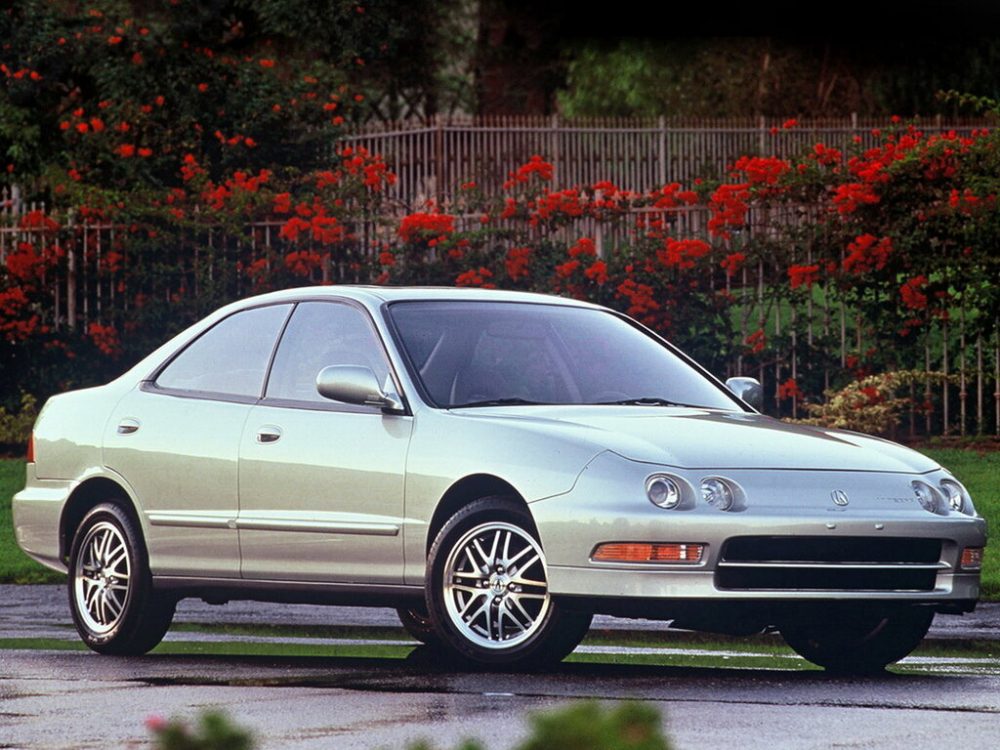Taking a trip back to the 1990s reveals one of the most influential sport sedans that shaped automotive culture – the third-generation Acura Integra. Built between 1993 and 2001, this sleek Japanese performer redefined expectations for affordable performance cars while maintaining everyday usability.
Those who remember the ’90s automotive scene know the Integra wasn’t just another economy car with sporty pretensions. The DB7/DB8 generation demonstrated Honda’s engineering prowess through its high-revving engines, precise handling, and build quality that stood the test of time.
Heart of a Champion
The 1.8-liter powerplant sitting under the Integra’s hood tells an interesting story about Japanese engineering philosophy. Unlike its European rivals that chased displacement and torque, Acura focused on high-revving efficiency and reliability. The base motor produced a respectable 142 horsepower, while the performance variants pushed out up to 197 hp – impressive figures for a naturally aspirated 1.8L engine of that era.
The real magic happened at high RPMs, where these engines truly came alive with a distinctive VTEC engagement that became legendary among enthusiasts. The motors proved incredibly durable when maintained properly, often reaching well over 200,000 miles without major issues.
“I’ve owned my ’95 Integra for over 15 years now. The engine still pulls strong to redline and doesn’t burn a drop of oil. These cars were built to last if you take care of them.” – Mike Chen, long-term Integra owner
The powerplant’s robust design also made it a favorite among tuners and motorsport enthusiasts. Even in stock form, the engine’s eagerness to rev and linear power delivery created an engaging driving experience that many modern cars struggle to replicate.
Driving Dynamics That Set Standards
The Integra’s chassis tuning demonstrated Acura’s commitment to delivering a proper driver’s car. Here’s what made it special:
- double-wishbone suspension at all four corners;
- quick-ratio steering rack with excellent feedback;
- balanced weight distribution;
- rigid chassis structure;
- responsive brake system with good pedal feel.
This sophisticated setup resulted in handling characteristics that punched well above the car’s price point. The Integra carved through corners with remarkable precision while maintaining enough compliance for daily driving comfort.
Practical Innovation
Beyond its performance credentials, the third-generation Integra proved remarkably practical for a sport sedan. The interior layout prioritized functionality without sacrificing comfort, featuring supportive seats and logical control placement. The cabin offered generous space for its compact exterior dimensions.
“My DB8 Integra served as both a weekend track toy and reliable daily driver. The trunk space was surprisingly generous, and the back seats actually fit adults – try finding that combination in modern sport sedans!” – Sarah Rodriguez, automotive enthusiast
The build quality stood out even by today’s standards. Panel gaps remained tight, interior materials aged gracefully, and the overall structure maintained its rigidity over decades of use. This attention to detail explained why many Integras survived as cherished classics rather than disposable transportation.
Market Impact and Legacy
The third-generation Integra’s influence extended far beyond its production run. Its combination of performance, reliability, and affordability created a blueprint that many manufacturers tried to follow. The car’s success helped establish Acura’s reputation for building engaging driver’s cars that didn’t sacrifice practicality.
Looking Forward While Looking Back
The automotive landscape has changed dramatically since the DB7/DB8 Integra’s heyday. Modern cars offer more power and technology, but many enthusiasts argue that something was lost in the pursuit of progress – the pure, mechanical connection that cars like the third-generation Integra provided.
Pros and Cons
| Advantages | Disadvantages |
|---|---|
| Exceptional handling dynamics with communicative steering | Power steering system can develop issues with age |
| High-revving, reliable engine with strong tuning potential | Cold weather starts require patience and proper warm-up |
| Quality interior materials that stand the test of time | Stock sound insulation shows its age by modern standards |
| Excellent fuel efficiency for a performance-oriented vehicle | Limited ground clearance can be challenging in some conditions |
| Strong aftermarket support and available parts | Rust can develop in wheel wells and rocker panels |
| Practical cargo space and usable rear seats | Finding unmodified examples becomes increasingly difficult |
| Simple maintenance requirements with good DIY potential | Premium fuel requirement for optimal performance |
The third-generation Acura Integra represents a sweet spot in automotive design where performance, practicality, and reliability intersected perfectly. While newer vehicles may surpass it in raw numbers, the Integra’s balanced approach to driver engagement and daily usability keeps it relevant even decades after its introduction.

